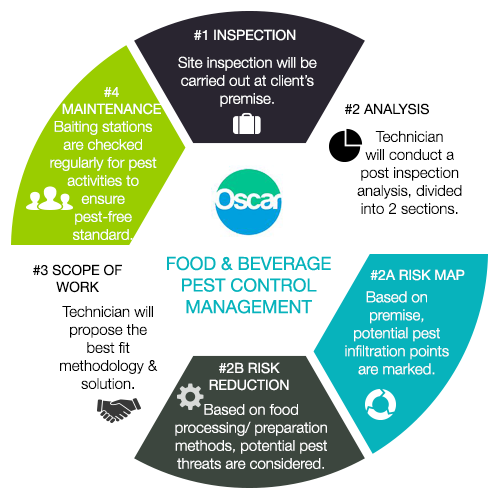By Acquiring Insight Into The Complexities Of Rodent Nesting Behaviors, You Can Establish A Detailed Approach To Rodent Control That Outwits These Parasites
By Acquiring Insight Into The Complexities Of Rodent Nesting Behaviors, You Can Establish A Detailed Approach To Rodent Control That Outwits These Parasites
Blog Article
Authored By-Broussard Corbett
When it comes to rodent control, recognizing usual rodent behavior is key to effectively handling problems. Did you recognize that rodents have some remarkable nesting habits that might stun you? By exploring their elaborate behaviors, you can get important understandings right into how to tackle rodent issues in a more critical and reliable fashion. So, let's untangle the mysteries behind these animals' activities and learn how to outmaneuver them in your rodent control efforts.
Rodent Nesting Behaviors
When observing rodents in their all-natural environment, you'll observe that they proactively look for materials to construct their nests. Rodents, such as mice and rats, are clever creatures that use a range of products like branches, leaves, paper, and material to build their homes. They're meticulous in their nest-building process, typically lining their nests with softer materials like fur or plumes to produce a relaxing atmosphere.
Rats prefer to construct their nests in concealed and safe areas to safeguard themselves and their young from predators. Typical nesting areas include wall dental caries, attic rooms, basements, and also within insulation materials. By constructing their nests in these secluded locations, rodents can securely increase their offspring far from possible threats.
It is important to understand the nesting habits of rats when executing control actions. By disrupting their nests or getting rid of materials, you can dissuade rodents from establishing an existence in your house or property. Proper cleanliness and sealing off entrance points are additionally vital steps in avoiding rodent problems.
Rodent Feeding Patterns
After observing rodents' nesting practices, it comes to be evident that their feeding patterns play an important duty in their lives and behaviors. Rats, including computer mice and rats, are opportunistic feeders, indicating they'll take in whatever food resource is conveniently available. They're largely nocturnal animals, favoring to forage for food throughout the cover of night to stay clear of predators.
Rodents have a diverse diet, varying from grains, seeds, fruits, and veggies to bugs, nuts, and even small pets. This adaptability in their food choices allows them to flourish in various atmospheres, including urban locations where human food resources are plentiful.
Their feeding patterns aren't only driven by hunger yet additionally by the need to stockpile food for times of deficiency. This behavior is particularly visible in preparation for winter months or when nesting. Rodents are known to hoard food in their nests or burrows, making sure a constant food supply. Comprehending their feeding patterns is important in carrying out reliable rodent control steps to disrupt their food sources and stop invasions.
Rat Motion and Traveling
Rats navigate their environments with agility and stealth, utilizing their eager detects to relocate quickly through their settings. https://www.thesun.ie/fabulous/9467474/pest-control-tips-hacks-spiders-irish-winter/ are skilled climbers, able to scale walls and upright surfaces with ease. They can also press through surprisingly little openings, making it essential to seal off any potential entrance points in your home.
When it comes to traveling, rats often tend to comply with acquainted courses, creating tracks along wall surfaces or skirting the sides of rooms. They're creatures of habit, usually adhering to these established courses as they forage for food or discover their environments.
Rats are known for their nocturnal practices, so you might hear them scooting about during the night as they search for food and water. Their movements are quick and erratic, permitting them to dart in and out of sight in the blink of an eye.
Understanding how rats relocate and take a trip can assist you recognize possible infestation areas in your home and take positive steps to prevent these insects from gaining a footing.
Conclusion
As you work to manage rats in your house, keep in mind that comprehending their actions is essential. By identifying their nesting habits, feeding patterns, and activity, you can effectively prevent invasions.
Coincidentally, by taking positive procedures to remove food sources and seal off entrance points, you can disrupt their familiar courses and require them to look for brand-new places, inevitably lowering the likelihood of rodent presence in your space.
